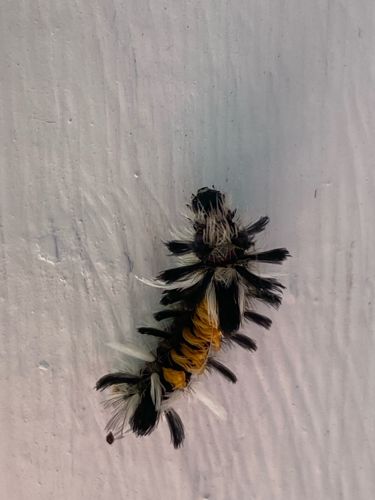Banded Tussock Moth Caterpillar (or Pale Tussock Moth Caterpillar)
Scientific Name: Halysidota tessellaris (Based on the distinct orange/yellow banding on the body between the black and white hair tufts)
Order & Family: Lepidoptera (Order); Erebidae (Family) - specifically within the subfamily Lymantriinae (tussock moths)
Size: Caterpillars typically range from 2.5 to 4 cm (1 to 1.5 inches) in length when fully grown.

Natural Habitat
Found in forests, woodlands, orchards, and suburban gardens where their host plants are present.
Diet & Feeding
The caterpillars are herbivores, feeding on the leaves of a variety of deciduous trees and shrubs, including oak, maple, birch, willow, and often on apple and other fruit trees.
Behavior Patterns
These caterpillars are largely solitary. After hatching, they feed on host plants, growing through several instars. When mature, they pupate, often forming a cocoon among leaves or in the soil. The adult moths are nocturnal and are attracted to light.
Risks & Benefits
Potential Risks: The hairs (setae) on these caterpillars can cause skin irritation, itching, rashes (dermatitis) in some sensitive individuals if touched, due to urticating properties. They are not venomous but the hairs act as irritants. Potential Benefits: As herbivores, they are an important part of the food chain, serving as food for various birds and predatory insects. Adult moths act as pollinators, though not as efficiently as bees or butterflies.
Identified on: 8/10/2025